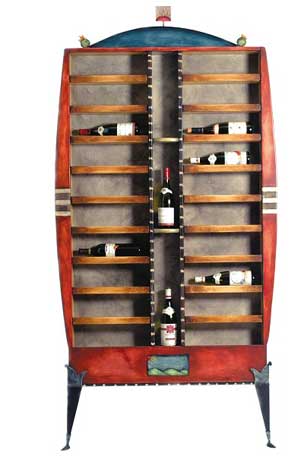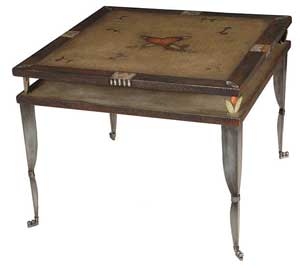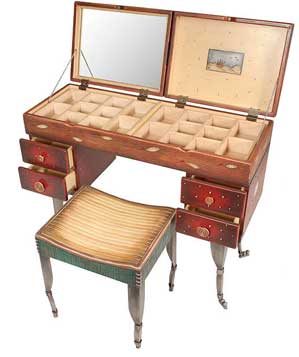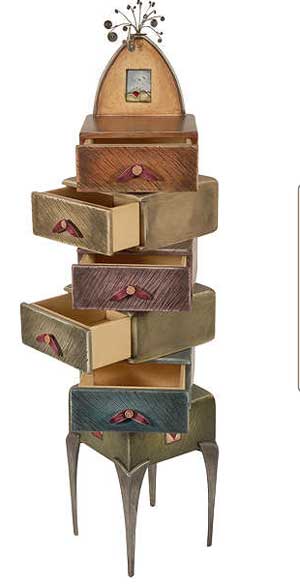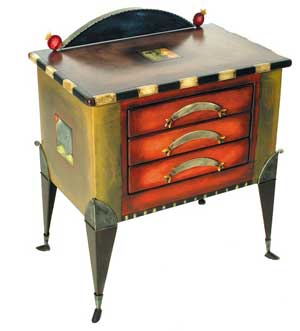
Avner Zabari did not grow up as a woodworker during his childhood in Israel, and, as he traveled the world after finishing his required military service, it was in painting where he first practiced his artistic skills. After traveling to South America, he landed in Miami, where he stayed.
The location has been a big influence on his work, he said — “definitely the colors, but not the colors of Miami Vice. It’s hot here, and very colorful. Miami is very mixed: a mix of colors, a mix of people, a mix from everywhere. It’ssomething I wasn’t open to before, but after I moved here, I found it very interesting. ‘Shorts with flip-flops’ is how I like my life to be.”
He also discovered, “after I came to the United States, I found out I have to do something more than painting — something people can use, and interact with.” Since Avner’s arrival in Florida was shortly after Hurricane Andrew, there was a need for furniture.
He makes a line of about 15 to 20 pieces a year of what he considers sculpture. “A piece I make, I make it 360 degrees. Artwork is the way I see it; I don’t see it as furniture.”
Avner works in different materials, including wood, metal and leathers, and will often combine them together. The metal, he said, might be steel hinges, or handles, shaped into different forms such as faces, leaves, butterflies and more. A cabinet might open to reveal a metal or leather interior and, “from time to time, I work a little bit heavily with metal, maybe forge legs.”
“Sometimes a different material can give you different options for design. And sometimes you’re working on something and you make a mistake, and you think, ‘oh, well, this can work.'”
Avner finds his inspiration for his designs, “everywhere,” including travel. He just came back from two months in Europe and the Middle East, where he noticed the architecture in particular. “I’ll see a building, and think ‘I can take this idea of a roof,’ he said. Then the piece doesn’t look like a buildnig, but a corner of the piece” might incorporate the design idea inspired by the roof shape.
He also notes that a typical element of his designs is a top piece: “Most pieces, I like something on the top. It seems like I like something like a hat.”
In his next generation of work, Avner said, he is combining his pieces with painting, although he is not yet sure in what manner. Ninety-nine percent of his woodwork, he noted, is painted — “Some people come and knock on it and ask, ‘Is this wood?’ They don’t think it’s wood because it’s painted.”
The wood he was working with earlier in his career, shortly after traveling to South America, was mostly pine. “I was touched by the primitive look: cracks on pieces, paint chips and all that. I used to buy damaged pine and create a design where the wood split, or a design where the nail pops out. Pine is a good wood for that style, very absorbing of paint.”
These days, “I’m a little bit more refined; I use plywood,” Avner said. He also sometimes works with a painting style he calls “organized mess,” which involves painting several layers of colors but leaving the shape of the wood and grooves visible under them. “When I apply the colors, you can see all the layers of colors. It’s an organized mess underneath all that,” Avner said. For instance, his pieces “Raising Love” and “Trying to be Good” have lines and freehand scratches on parts like drawer faces, “but they’re organized scratches,” Avner said.
Almost all of his pieces, he said, have design incorporated into the back and the front. “It’s very important that you see the piece in person,” he said. “Everything in my pieces comes from my heart.”
